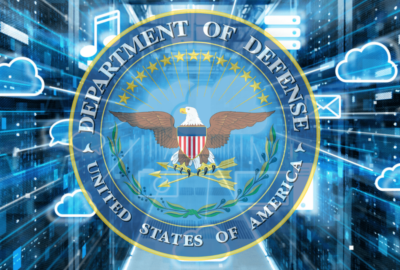McDonald’s VA Web concept reveals real customer service challenge
Exclusive: The Veterans Affairs Department Secretary’s idea to create “Veterans.gov” is so good, the Labor Department already did...
Secretary of Veterans Affairs Bob McDonald has taken a lot of heat since he took over the beleaguered agency a little over a year ago. And while he’s made some missteps (most notably partially blaming one of his customers, a member of Congress, for the problems at the Denver hospital construction site, and misstating his military service), he’s done many things that will wind up making a veteran’s experience better when that vet deals with the agency.

One of those is the hiring of a Veterans Experience Officer, Tom Allin. Allin’s appointment is a step in the right direction for America’s veterans, for two reasons:
- Allin comes from the very competitive fast-food and fast-casual dining industry. What does that have to do with VA, you may ask? There are very few businesses today where establishing brand trust and loyalty are more important than fast food. With so many choices, businesses in that space depend on returning customers to build their bottom lines. VA is in the same spot, in many ways. Senate Armed Services Committee Chairman John McCain’s (R-Ariz.) new bill to let all vets into the VA Choice program in essence creates competition for the VA health care system. If the Army Corps of Engineers can get the Denver hospital project back on the rails and completed, you can expect more competition for VA’s Office of Construction and Facilities Management. These are only two places where pressure is coming for funds that currently go to the VA, to go other places. So earning veteran loyalty and demonstrating VA’s commitment to serving its customers is more important than ever.
- Veterans (and Congress) now have a name and a job title that they can hold accountable. If Allin and McDonald can’t point to concrete examples of how the agency is better at serving veterans, and how they’ve ended at least some of the problematic examples of poor service, Congress, veterans service organizations and vets themselves have a head to call for. I don’t believe that will be necessary — I think McDonald’s intention to change the agency will happen — but the incentive to succeed increases with the presence of a specific person stakeholders can hold accountable.
McDonald also has a strong grip on the challenges his agency puts in the way of veterans. “If I went to a veteran and said, ‘What’s Blue Button?’ they would have no idea,” he said recently at an event hosted by Politico. “Our websites have unusual names. E-Benefits, MyHealtheVet, etcetera. What’s wrong with Veterans.gov or Vets.gov? Rather than looking at everything through the lens of the bureaucracy toward the customer, let’s look at everything from the lens of the customer.”
Amen. He’s exactly right. But one element of that statement reveals one of the major problems McDonald faces as he tries to remake the organization.
Try typing Veterans.gov into your browser, and see what happens. Spoiler alert: you’ll get redirected to a great site that’s well-designed and easy to use, with tons of detail about the Veterans’ Employment and Training Service. The host of that site and administrator of the VETS program? The Department of Labor.
I’m not suggesting the Labor Department shouldn’t run the VETS program; I don’t know whether that program should be absorbed into one of the many vets employment programs at the VA or not. But McDonald’s reference, and my subsequent trip to the Web browser, serve as a reminder of the size and scope of the duplication-and-overlap problem the VA — and the government more broadly — has to deal with.
The idea behind McDonald’s remarks is right on target. Thinking like the customer is a concept that McDonald’s Proctor & Gamble experience makes very clear to him. The holdup to changing that thinking may well be the bureaucracy that McDonald has gently suggested is part of the problem.
All of this focus on the customer is a step in the right direction, but it shouldn’t be VA’s destination. It should be the vehicle the agency uses to get to the destination. Better outcomes for vets — better health, longevity, employment, housing and so on — are the real test. Phillip Carter of the Center for a New American Security worries that so far, the VA’s strategy to boost customer experience leaves largely intact the three parts of the VA that provide services to vets — the Veterans Health Administration, Veterans Benefits Administration and National Cemetery Administration. Carter told me, “The really big organizational opportunity is to break those apart, and build something of an integrated regional structure.” So far, though, VA hasn’t indicated a willingness to take on restructuring of that magnitude.
Allin told the Federal Times back in May a revamped VA website would go live May 20. If the agency hit that target, I missed the announcement. The recent turnover in the chief information officer’s shop there — new CIO Laverne Council confirmed, Deputy CIO Steph Warren and Chief Information Security Officer Stan Lowe both departed — certainly doesn’t make an undertaking like a new website easier; and if the concept of a simple, streamlined, one-stop VA website is simply delayed, not off the table, then vets still have a chance at a big win.
But it appears the site will have to be Vets.gov, which yields a “this webpage is not available” screen when you go there. Unless VA wants to bargain with the Labor Department over Veterans.gov.
Copyright © 2024 Federal News Network. All rights reserved. This website is not intended for users located within the European Economic Area.





